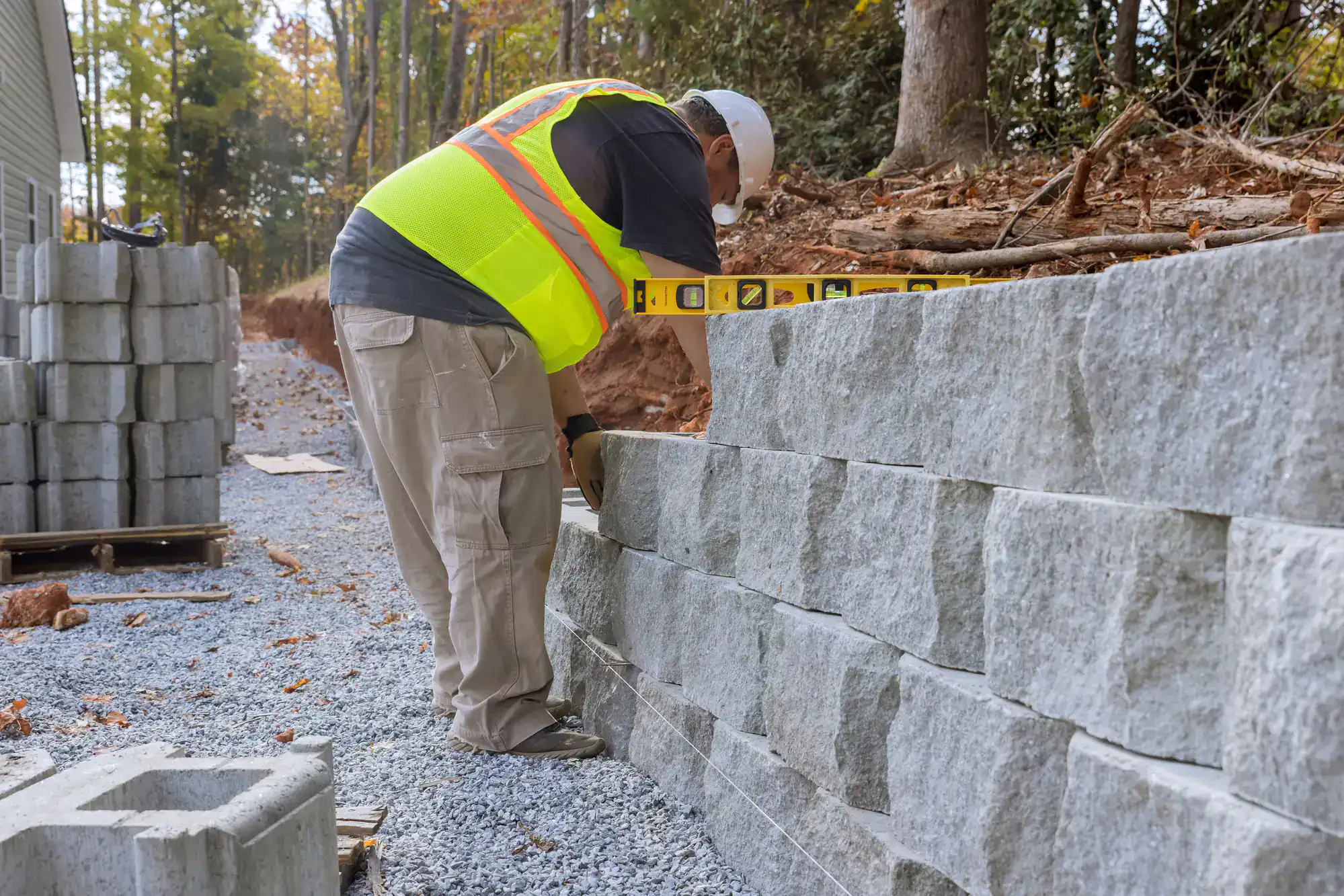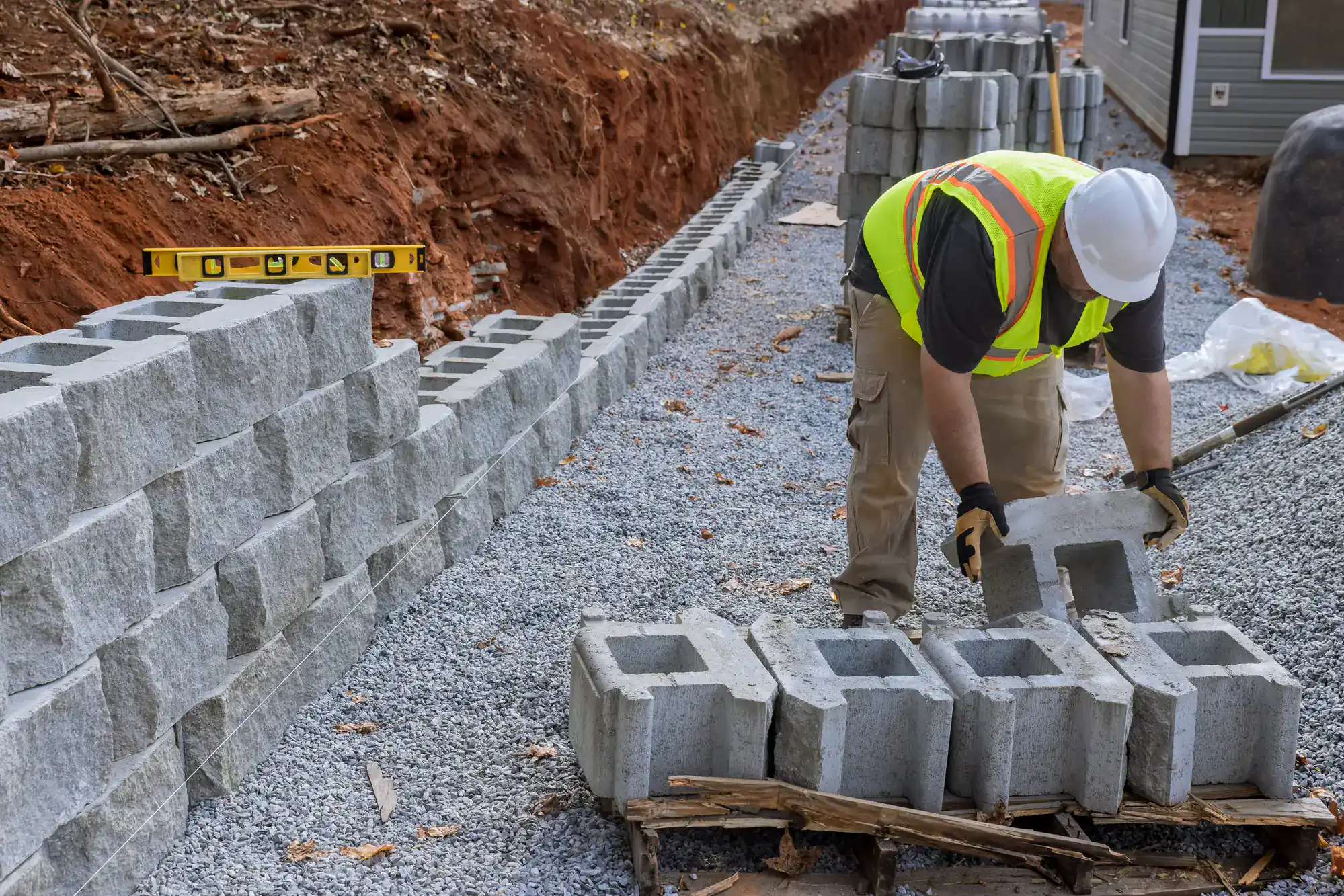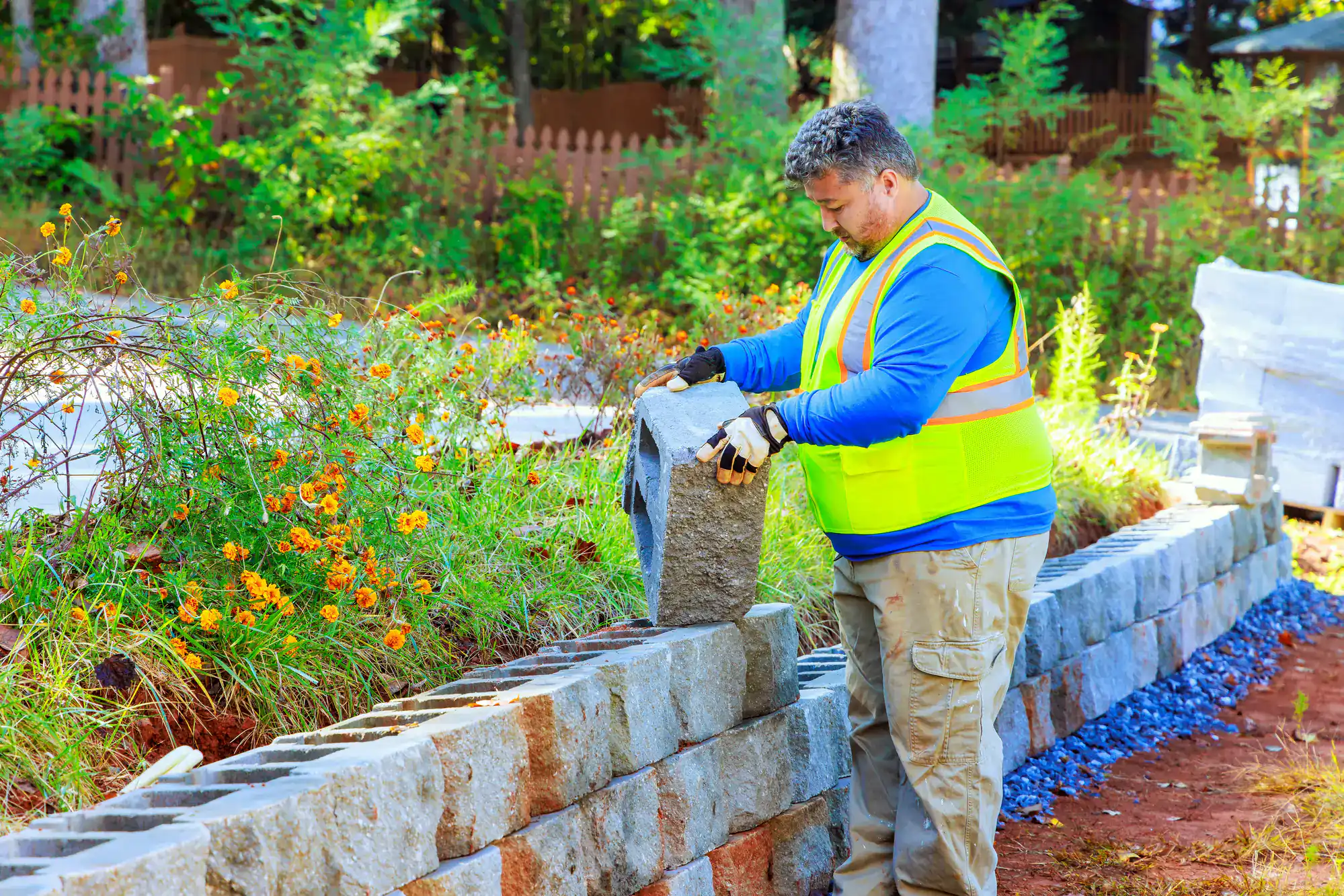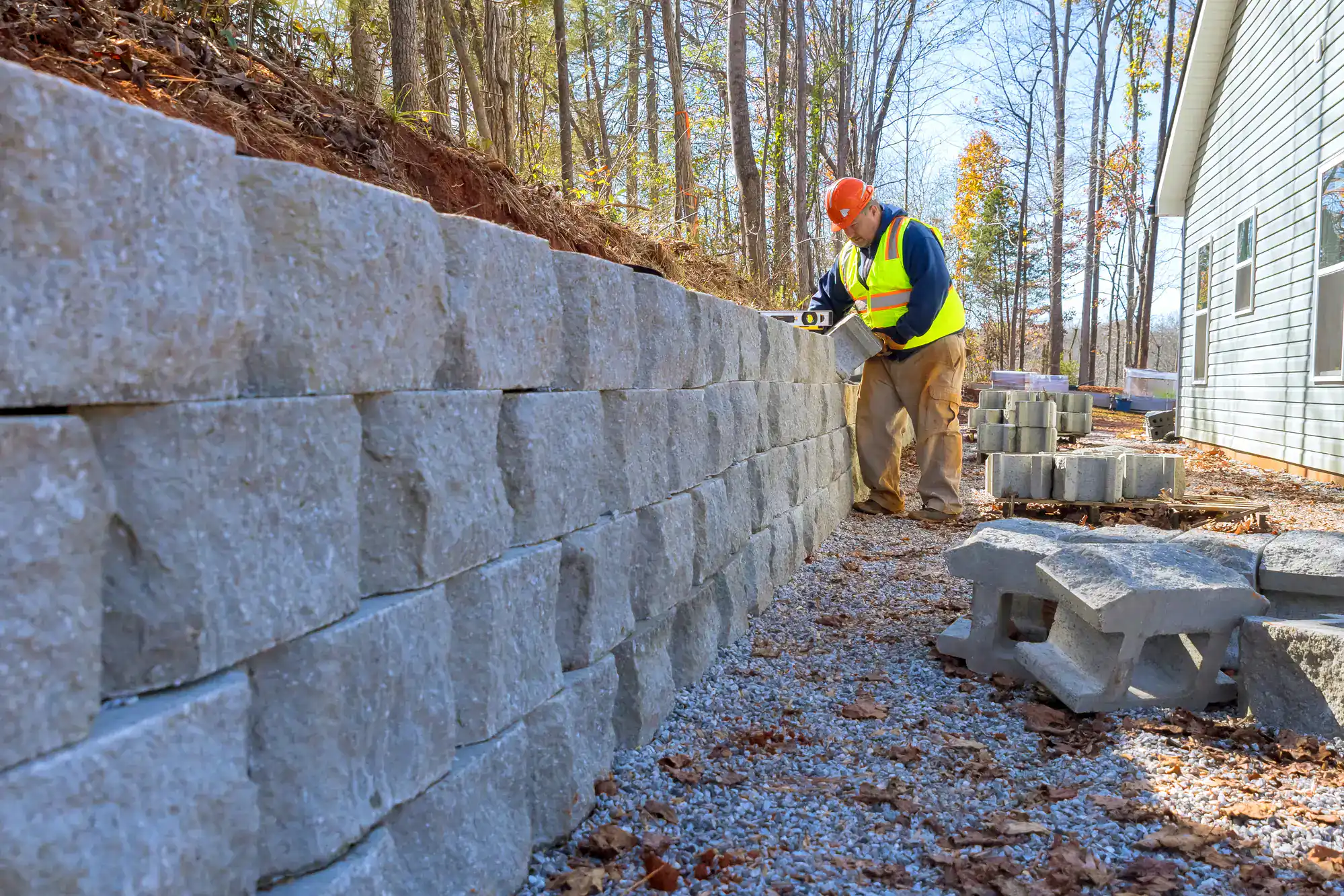

You’re tired of watching your yard wash away every time it rains. You need more than a quick fix—you need a solution that works for decades, not just a few seasons.
A properly built retaining wall does more than hold back dirt. It creates level areas where you can actually use your yard, protects your home’s foundation from water damage, and stops that constant worry about erosion eating away at your property value.
When we’re done, you’ll have stable ground that stays put through Florida’s heaviest storms. No more muddy runoff. No more losing plants to washouts. Just solid, dependable protection that lets you enjoy your outdoor space instead of constantly repairing it.
We’ve been solving drainage and erosion problems in Citrus County since 1995. We’re the family business your neighbors trust when they need a retaining wall built right the first time.
As authorized contractors for Tremron, Flagstone, and Belgard, we use materials that can handle Florida’s unique challenges. We’re also the exclusive Seal ‘n Lock distributor in our county, which means you get access to the best products available.
We’ve seen what happens when retaining walls are built wrong—they fail within a few years, creating bigger problems than you started with. That’s why we focus on proper drainage, solid foundations, and materials that won’t let you down when the next hurricane season hits.

First, we evaluate your specific site conditions. Florida’s sandy soils and heavy rainfall require different approaches than other regions, so we assess drainage patterns, soil composition, and the slope you’re dealing with.
Next, we handle all permits and engineering requirements. In Inverness Highlands North, walls over 12 inches need permits, and taller walls require additional safety features. We take care of this paperwork so you don’t have to navigate city requirements yourself.
Then we excavate and install proper drainage systems. This is where most contractors cut corners, but it’s the most critical step. We install perforated pipes, gravel backfill, and weep holes that prevent water pressure from building up behind your wall. Finally, we build the wall using interlocking blocks designed for Florida conditions, ensuring each course is level and properly secured.

Ready to get started?
In Inverness Highlands North, your retaining wall needs to handle more than just holding back soil. It needs to survive hurricane-force winds, constant moisture, and Florida’s unpredictable weather patterns.
We use concrete block systems from Tremron, Flagstone, and Belgard because they’re engineered for our climate. These materials resist cracking from temperature changes and won’t deteriorate from constant exposure to humidity and rain like cheaper alternatives do.
Every wall includes proper drainage components—French drains, weep holes, and gravel backfill that prevent the hydrostatic pressure buildup that destroys most retaining walls. We also factor in local soil conditions, which tend to be sandy and require specific foundation techniques to ensure long-term stability. For walls over 30 inches, we include required safety railings that meet Florida building codes while maintaining the aesthetic appeal of your landscape.

Retaining wall costs in our area typically range from $20 to $50 per square foot, depending on height, materials, and site conditions. A basic 50-foot wall might cost $4,000 to $10,000, but several factors affect the final price.
Height matters significantly—walls over 12 inches require permits, and walls over 30 inches need safety railings, which adds to costs. Site accessibility, soil conditions, and drainage requirements also impact pricing. Sandy soils common in Inverness Highlands North may require deeper foundations, while areas with poor drainage need more extensive drainage systems.
We provide detailed estimates that break down all costs upfront, including permits, materials, labor, and any additional features your specific site requires. This way, you know exactly what you’re investing in before we start.
A properly built retaining wall in Florida should last 20 to 50 years or more, but this depends entirely on construction quality and materials used. Florida’s climate presents unique challenges—constant humidity, heavy rainfall, and temperature fluctuations that can destroy poorly built walls within just a few years.
The key is proper drainage. Walls that fail early almost always have inadequate drainage systems that allow water pressure to build up behind them. We install comprehensive drainage including French drains, weep holes, and proper backfill materials that handle Florida’s heavy rains.
Material choice also matters. We use concrete block systems from manufacturers like Tremron and Belgard specifically because they’re designed for our climate conditions. Cheaper materials or improper installation techniques might save money upfront but typically result in costly repairs or complete replacement within 5-10 years.
Yes, most retaining walls in Inverness Highlands North require permits if they’re over 12 inches tall. This includes engineering drawings and inspections to ensure the wall meets local building codes and safety requirements.
For walls 30 inches or taller, you’ll also need safety railings or barriers, which adds another layer of requirements. The permit process typically costs several thousand dollars and requires professional engineering drawings before construction can begin.
We handle all permit applications and inspections for you. Our team knows the local requirements and has established relationships with city officials, which helps streamline the approval process. We also ensure your wall meets all current building codes so you won’t have issues if you ever sell your property or need inspections for insurance purposes.
Leaning or cracking retaining walls are serious safety hazards that require immediate attention. These problems usually indicate foundation failure, inadequate drainage, or poor construction techniques, and they typically get worse quickly if not addressed.
Small cracks might be repairable with concrete patching, but leaning walls often need complete reconstruction. The underlying cause—usually water pressure buildup or foundation issues—must be fixed, or the problem will just return. This is why proper drainage and foundation work are so critical during initial construction.
If you’re seeing these warning signs, don’t wait. A failing retaining wall can collapse suddenly, potentially causing property damage or injury. We can assess the situation and recommend whether repair or replacement is the safer, more cost-effective option. In many cases, rebuilding with proper drainage and materials costs less than repeatedly patching a fundamentally flawed wall.
We can build retaining walls year-round, but timing does matter for optimal results. Florida’s rainy season (roughly June through October) presents some challenges, but proper planning and techniques allow us to work effectively even during wetter months.
The key is scheduling around weather patterns and having proper site preparation. We monitor forecasts closely and can adjust our timeline to work around heavy rain periods. For excavation and foundation work, we prefer drier conditions, but wall construction itself can proceed in most weather.
Actually, building during rainy season can be advantageous for testing drainage systems as we install them. We can see exactly how water moves across your property and make real-time adjustments to ensure optimal performance. We also take extra precautions to protect work areas and materials from moisture during construction, ensuring the finished wall meets our quality standards regardless of when it’s built.
Retaining walls and seawalls serve similar functions but are designed for different environments. Retaining walls hold back soil on dry land, while seawalls protect shorelines from water erosion and wave action. In Inverness Highlands North, you’ll typically need retaining walls unless your property is directly on water.
Retaining walls focus on managing soil pressure and drainage from rainfall and irrigation. They’re built to handle the weight of soil and prevent erosion on sloped properties. Seawalls, on the other hand, must withstand constant water pressure, wave action, and tidal forces.
The construction techniques and materials differ significantly. Retaining walls use drainage systems like French drains and weep holes to manage water behind the wall, while seawalls are designed to be waterproof barriers. If your property has both inland slopes and waterfront areas, you might need both types of walls, each engineered for its specific environment and challenges.
Useful Links
Other Services we provide in Inverness Highlands North